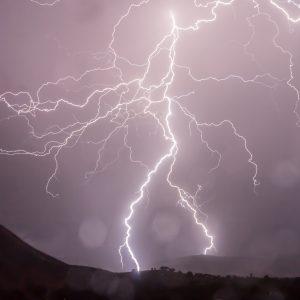 First of all, during any storm, be sure your family is first and foremost in a safe dry place and don’t try to be a hero during the storm. Your property is not more important than your life and your family. Do home preparations in advance, follow guidelines for evacuations, and don’t hesitate to get assistance during and/or following any storm.
First of all, during any storm, be sure your family is first and foremost in a safe dry place and don’t try to be a hero during the storm. Your property is not more important than your life and your family. Do home preparations in advance, follow guidelines for evacuations, and don’t hesitate to get assistance during and/or following any storm.
Here are some tips for cleaning up your yard and doing so in a safe manner, after a bad storm has passed.
First be on the alert when you first venture outside. Heed caution and stay away from utility lines, and look for tree limbs and branches leaning against or touching downed power lines and phone and cable lines. A tree in contact with a power line and the ground at the base of the tree can still be dangerous and energized.
Watch for broken limbs that may still be lodged in trees, because they may unexpectedly fall. Remove all stones, sticks, and leaves from your lawn and yard. Remove any broken branches or limbs still attached to any trees. Smaller branches should be pruned at the point where they join larger ones. Cleaning up your yard will help the wind and sun dry your water logged yard just a little bit faster than if you let the elements take care of this debris on their own. Put what you can in your compost pile, separating oak leaves and other material that may not decompose. The rest can be disposed of while you hold a safe, contained fire in your backyard to help burn the rest of it. Please be aware that your local fire authorities and city personnel may have regulations on proper handling of these materials.
Evaluate your trees carefully. Check your trees, lawn and shrubs for storm damage. Other than storm damage, do the trees seem fairly healthy? Is at least 50 percent of the crowns of the trees still intact? Are major limbs and/or the leading branches still remaining? Are there any remaining branches that can form a new branch structure? Pay attention to which shrubs or trees were adversely affected. These can pose dangerous conditions prior to and during removal. For more larger tree projects, it is recommended that you call a tree specialist to figure out what your options are for any damaged trees.
Be sure to also check your drainage systems, gutters, and storm drains for mud, excess water, leaves, and other lawn debris. These systems can sustain damage as well during a big storm. Find professionals that specialize in flood and drainage issues. Keep in mind too that no system is foolproof and most require regular maintenance, especially following a storm.
Lastly do not try to do it all by yourself. Evaluate what you can handle and what other professionals can do, and by the way, note that anything not on the ground should definitely be handled by a professional. Some of these things could pose a huge danger for you and your family, so it makes sense use professionals if you’re not absolutely confident in your skills.
